The Two Most Common Reversible Causes of Pea Are:
As you are moving through your algorithms during ACLS and PALS it is important to also consider reversible causes for the emergent condition. Which is why ACLS providers must look for evidence of these problems when assessing their patients.

Pulseless Electrical Activity Asystole Acls Online Handbook
The identification and correction of the causes of PEA should be a high priority as a cardiac emergency progresses.

. The Hs and Ts that are possible causes of PEA include all the following EXCEPT. Proper oxygenation and ventilation are key to restoring adequate amounts of oxygen into the system and negating the lethal cardiac rhythm. Hypovolemia and hypoxia are the two most common causes of PEA.
Regardless the most common reversible causes of PEA include hypovolemia pump failure and obstruction to circulation such as choking or even trauma. The Advanced Cardiac Life Support ACLS algorithm includes the treatment of causes of cardiac arrest after performing initial interventions and completing an advanced course to. The two most common and easily reversible causes of PEA are.
Respiratory failure leading to hypoxia is one of the most common causes of pulseless electrical activity responsible for about half of. One easy way to remember the most common causes of PEA as well as other cardiac emergencies is the Hs and Ts of ACLS. Hypovolemia toxins hypoxia thrombosis hypoglycemia thrombocytopenia hypothermia tamponade hydrogen ion tension pneumothorax hypokalemia hypothermia.
Common causes of PEA include all of the following EXCEPT. They are also the most easily reversible and should be at the top of any differential diagnosis. These include the following.
If the individual has a return of spontaneous circulation ROSC proceed to post-cardiac arrest care. Hypovolemia Hypoxia Acidosis Hypokalemiahyperkalemia Hypoglycemia Hypothermia Toxins eg tricyclic antidepressants digoxin calcium channel blocker beta-blockers Cardiac tamponade Tension pneumothorax Massive pulmonary embolus Acute myocardial infarction. It should be noted that the most common causes of pulseless electrical activity PEA are hypoxia and hypovolemia and both are potentially reversible.
11 The absence of mechanical contractions is produced by factors that deplete myocyte high-energy phosphate stores and inhibit myocardial fiber shortening including hypoxia ischemia metabolic acidosis and ionic. Bradycardia is defined as any rhythm disorder with a heart rate. Of the Hs and Ts hypovolemia and hypoxia are the two most common underlying and potentially reversible causes of PEA.
Hypoxia Hypovolemia Hypohyperkalemia Hydrogen ion acidosis Hypothermia Hypoxia Hypovolemia Hypohyperkalemia Hydrogen ion acidosis Hypothermia Ts. Provide effective CPR and promptly use core drugs. Trauma and hydrogen ion acidosis trauma and hypoxia hypovolemia and hypothermia.
Treating the cause of hypoxiahypoxemia must be done quickly because this is one of the potentially reversible causes of cardiac arrest. See the Hs and Ts page for more information on the causes and treatment of PEA. They are also the most easily reversible and should be at the top of any differential diagnosis.
They are also the most easily reversible and should be at the top of any differential diagnosis. They are also the most easily reversible and should be at. The two most common and easily reversible causes of PEA are.
Hypovolemia and hypoxia are the two most common causes of PEA. Trauma and hydrogen ion acidosis C. Which pressor has been removed from the Adult Cardiac Arrest Algorithm in 2015.
The Unique Case for PEA and Bradycardia in Pediatric Care. PEA formerly known as electromechanical dissociation occurs in patients who have organized cardiac electrical activity without a palpable pulse. A Provide effective CPR and correct the underlying cause of the rhythm.
Hypovolemia and hypothermia 4. Pulseless electrical activity PEA and asystole are related cardiac rhythms in that they are both life-threatening and unshockable. The two most important aspects to treating PEA are.
The importance of the Hs and Ts cannot be overstated. Trauma and hypoxia 3. Which is why its important to look for evidence of these problems as you assess the patient.
We should stop remembering the Hs Ts of PEA and instead look for the most common reversible causes with the use of POCUS. Almost all the Ts can be found with POCUS Joe likes to look for pericardial tamponade during his first rhythm check then right heart strain at his second rhythm check he prefers the parasternal long axis view. Hypoglycemia and cardiac tamponade.
Trauma and hydrogen ion acidosis 2. If the individual has a return of spontaneous circulation ROSC proceed to post-cardiac arrest care. Hypovolemia and hypothermia B.
Transient coronary occlusion usually does not cause pulseless electrical activity unless hypotension or other arrhythmias are involved. Hypovolemia and hypoxia are the two most common causes of PEA. The two most common reversible causes of PEA are.
Secondary pulseless electrical activity is due to potential reversible causes also known as the Hs Ts. Pulseless electrical activity PEA asystole ventricular fibrillation VFib or VF and ventricular tachycardia VTach or VT may have a reversible cause in your patient though most often PEA. The two most common and easily reversible causes of PEA are.
The two most common and easily reversible causes of PEA are. Hypovolemia and hypoxia are the two most common causes of PEA. If the individual has a return of spontaneous circulation ROSC proceed to post-cardiac arrest care.
However the most common causes of cardiac arrest the Hs and Ts which are typically the result of trauma or chronic health problems can be reversed through proper treatment.

Pea And It S Acls Algorithm Acls Algorithms Com

Quantitative Characterization Of Left Ventricular Function During Pulseless Electrical Activity Using Echocardiography During Out Of Hospital Cardiac Arrest Resuscitation

Causes Of Pea Listed By European And American Guidelines Hypoglycemia Download Scientific Diagram

7c A Guide To The International Acls Algorithms Resuscitation
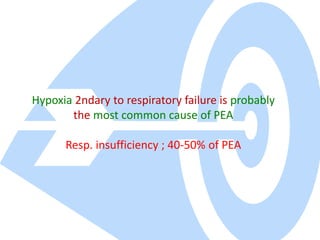
Pulseless Electrical Activity Bradycardia Nov 2014

Causes Of Pea Listed By European And American Guidelines Hypoglycemia Download Scientific Diagram

H S And T S Of Acls Acls Algorithms Com

Cardiopulmonary Resuscitation Resuscitation Strange And Schafermeyer S Pediatric Emergency Medicine Fourth Edition Strange Pediatric Emergency Medicine 4th Ed

Pulseless Electrical Activity Archives Rebel Em Emergency Medicine Blog
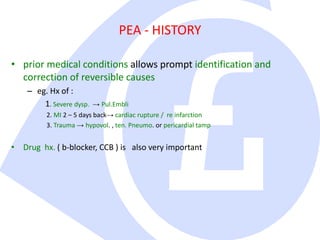
Pulseless Electrical Activity Bradycardia Nov 2014

Pulseless Electrical Activity Asystole Acls Online Handbook

Pdf Pulseless Electrical Activity Detection Of Underlying Causes In A Prehospital Setting

Part 6 Advanced Cardiovascular Life Support Circulation

New Classification Of Pea Based On Its Initial Electrocardiographic Download Scientific Diagram
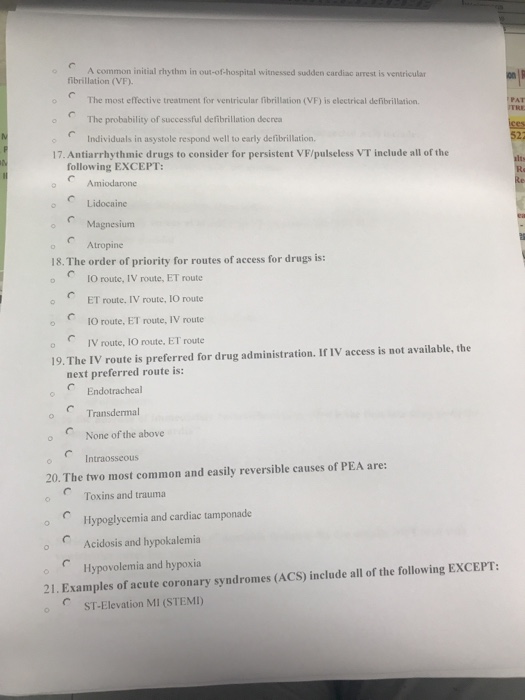
Solved A Common Initial Rhythm In Out Of Hospital Witnessed Chegg Com
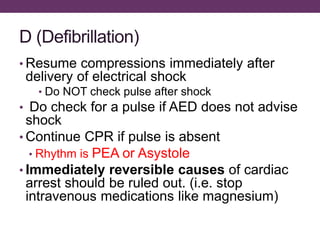
Maternal Cardiac Arrest English
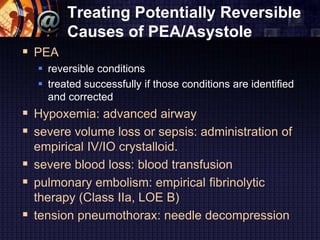
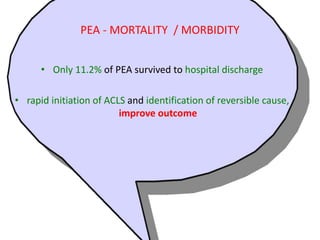
Comments
Post a Comment